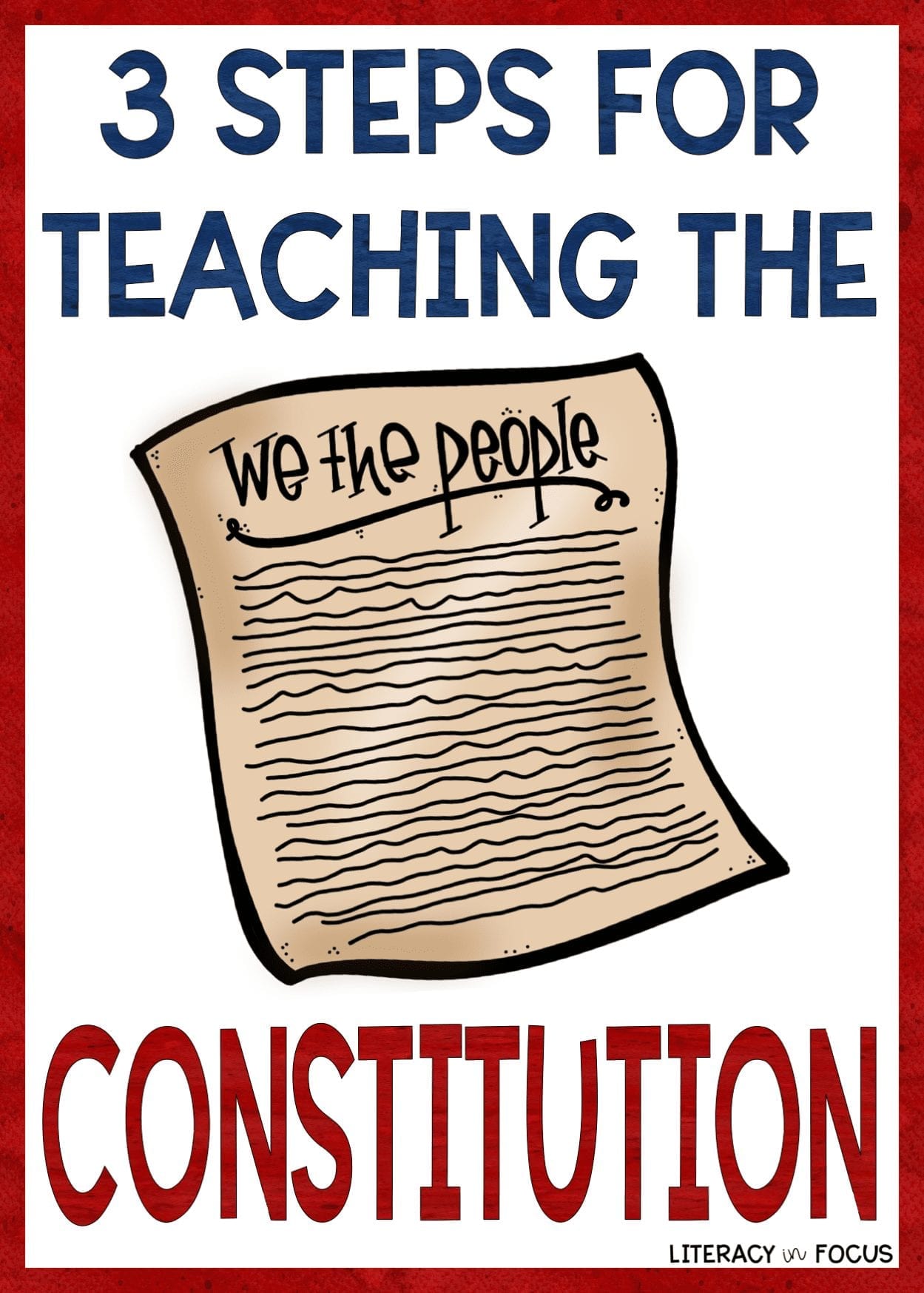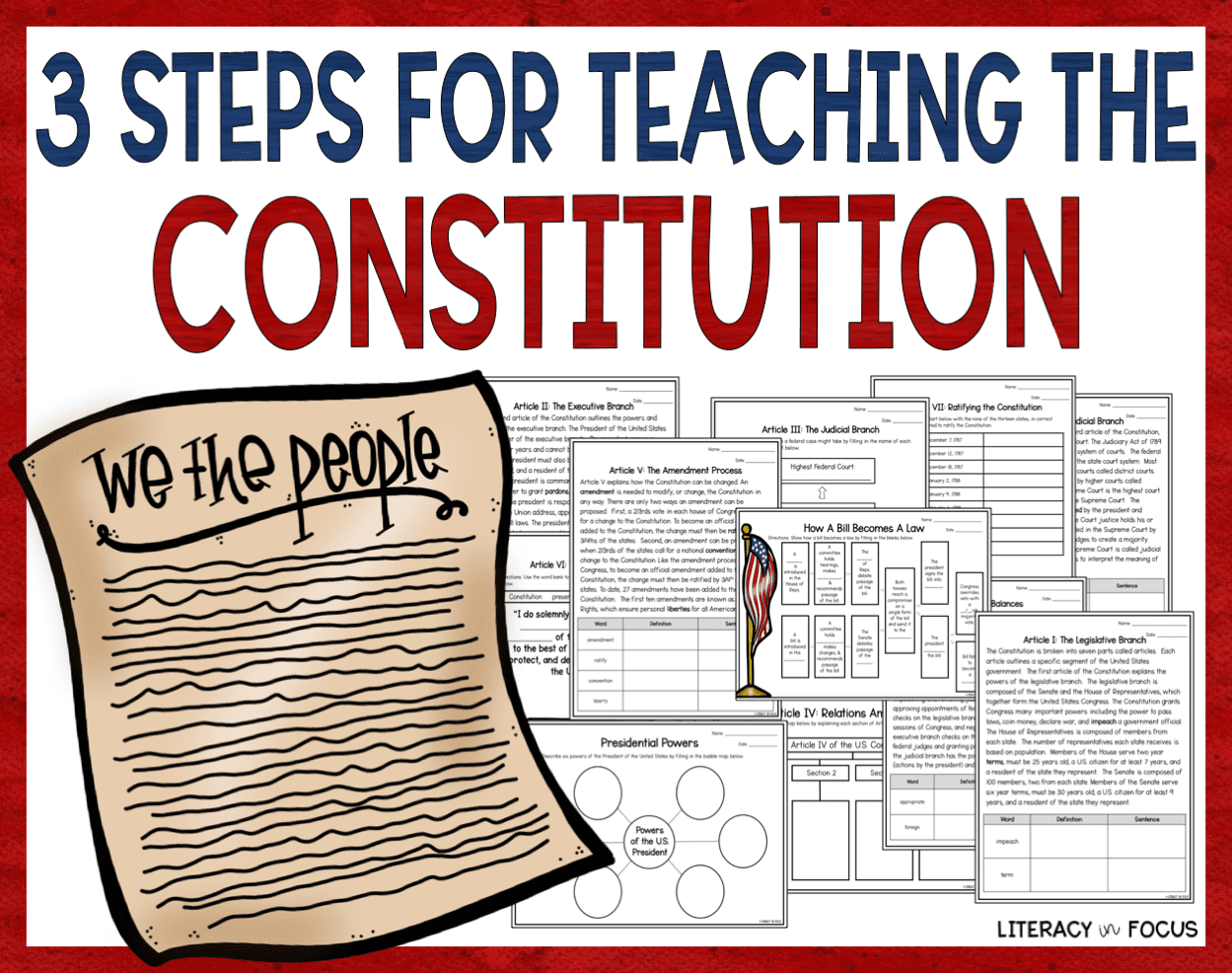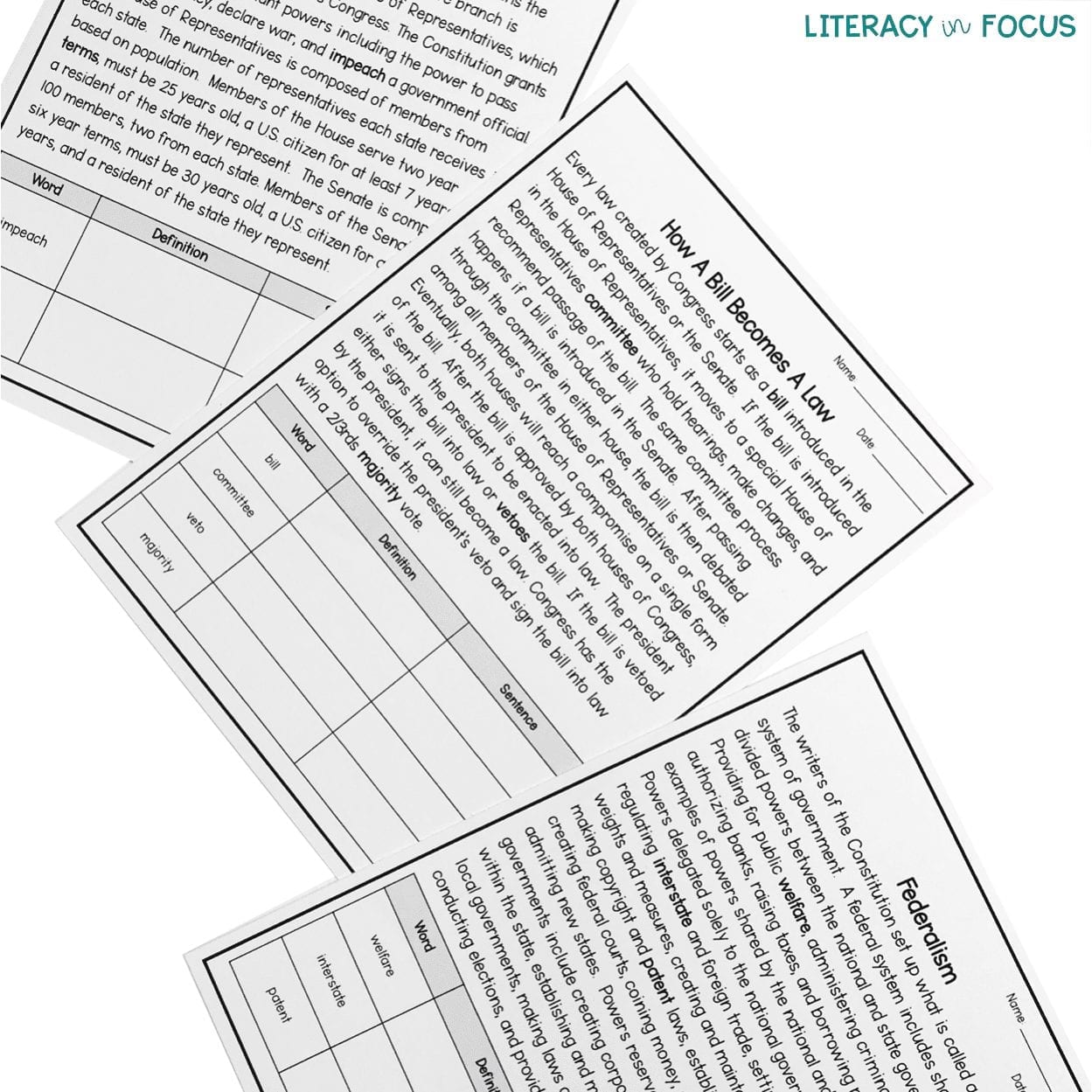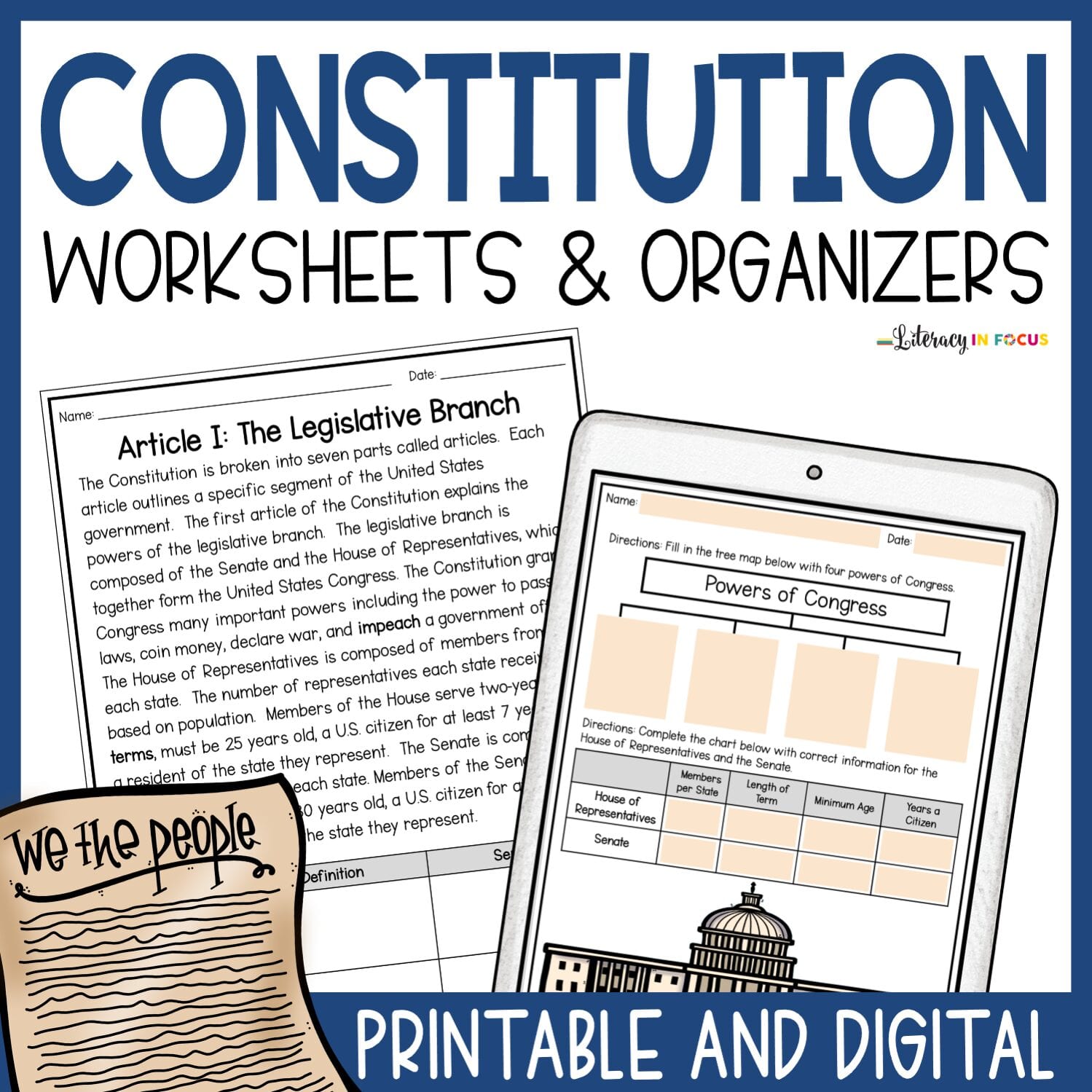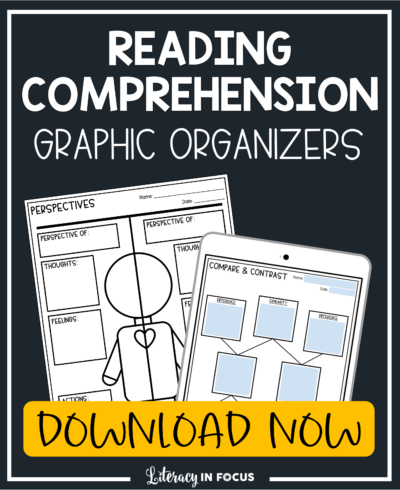3 Steps for Teaching the Constitution
I used to dread teaching the Constitution. Although it is one of the most important units of the year, the material is so dry and dense it causes eyes to glaze over and shoulders to slouch. Even the most curious of students must be coaxed into learning about the intricacies of our federal government. In order to up the odds of engagement and reach students of all levels and abilities, I break the unit into several digestible lessons, focusing on a different aspect of the Constitution for each one. The individual lessons are then broken into three different steps.
Informational Text
Starting each lesson with informational text will give students a strong foundation to build upon as the lesson continues. It is important to select a text that is accurately leveled for your students. Reading the text sets the tone for rest of the lesson, which makes picking the right text a critical step. Providing engaging texts that are motivating and meaningful is essential for helping students build the skills necessary for unpacking the information.
Vocabulary Support
After reading the text, we dive deeper into the academic vocabulary. In the planning phases of the lesson, I select a handful of vocabulary terms I think are important for understanding the overall concepts. It is important for students to be strategic about the new vocabulary. Strategic readers think about words in context, looking for meaning in the words and sentences that frame an unfamiliar word. While ideal, defining the terms using context isn’t alway possible due to the difficult nature of the vocabulary related to the Constitution. I find it helpful to have dictionaries available for those students who have trouble defining words. In addition to defining each term, students are required to provide an original sentence. The ability to construct an original sentence will determine if the student has a clear grasp of each new term. After recording the definition and an original sentence, students sketch a picture to represent the word meaning. Connecting the word meaning to a visual representation should help to solidify understanding. In an effort to cement learning, it might be beneficial to read through the text a second time. At this point in the lesson, the foundation has been set and scaffolding has been put in place to ensure all learners have access to the content.
Click Here to Download the PRINTABLE & DIGITAL Constitution Worksheets from Literacy in Focus on TpT
Graphic Organizer
The final part of the lesson relies on the use of a graphic organizer. The goal in using the graphic organizer is to help students identify the main points and clear up any misunderstandings. Since graphic organizers present material through the visual and spatial modalities (and reinforce what is taught in the classroom), the use of graphic organizers helps students internalize what they are learning. The type of graphic organizer used will be determined by the text. One piece of text might lend itself to a classification chart, while another might require a descriptive bubble map. Students can either work with a pre-printed organizer or copy one onto their own paper. In addition to reinforcing the concepts present in the text, the graphic organizer can also serve as a formative assessment. It will indicate which students are ready to move to the next aspect of the Constitution.
The use and placement of instructional scaffoldings when teaching the Constitution make the process much less daunting for all involved. Like any other overwhelming task, the act of breaking it into more manageable chunks makes a big difference. Compiling the text, vocabulary, and graphic organizers into separate worksheets or a complete student workbook will give students a chance to work with the individual aspects of the Constitution in a comprehensible format.
